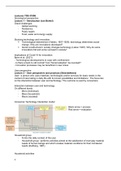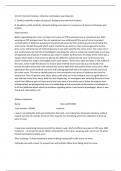Samenvatting
Consumer, Technology and Innovation - Lecture summary (YSS-31806)
Summary of the 8 lectures and 1 guest lecture of the master course YSS-31806 Consumer, Technology and Innovation. This is a mandatory course for the master MME (Management, Economics and Consumer Studies). I got a 9.5 for the exam with my summaries. This lecture summary contains a summary of the fo...
[Meer zien]






